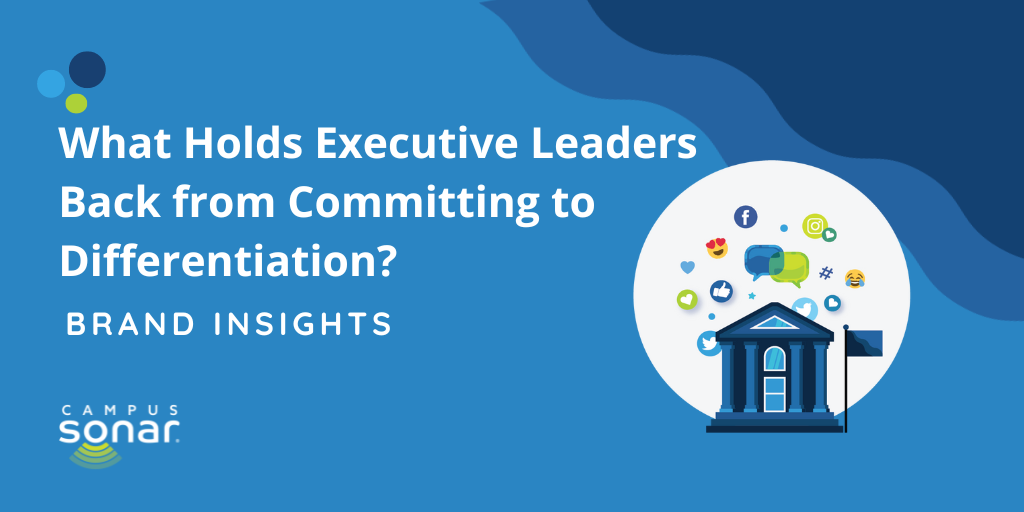What Holds Executive Leaders Back from Committing to Differentiation?

Differentiation is the bottom line of brand strategy. It's what makes an institution relevant and justifies its tuition and perceived quality. Yet any effort to stand out from the competition is a challenging prospect for many institutions searching for relevance and future direction.
In a competitive market, it's becoming increasingly important for institutions to stand out. At the Council of Independent Colleges, AASCU, and AMA Higher Ed, industry thought leaders called for collective action to focus strategic planning efforts on differentiation.
That’s why we brought together three industry experts, Suzan Brinker, Rob Zinkan, and Nicole Szymczak, to discuss the real challenges leaders face in institutions that attempt this type of work and what can be done to develop strategies to support their efforts.
What challenges do you see in getting differentiation off the ground?
Rob Zinkan’s comment on institutions' tendency to be transfixed on their aspirational peers instead of their direct competitors is a common challenge. As Suzan Brinker suggests, getting started comes down to a choice and courage to be different in the face of hard-to-reach consensus. Fear of leaving something out is difficult for institutions to navigate, along with the political turmoil and philosophical debate that comes with it.
The takeaway
There are no easy paths but there is direction in listening to the audiences you’ve defined as critical to your institution’s success. Outlining a differentiation strategy that accounts for the needs of your audience offers a Northstar for decision-making and change management.
Can we integrate culture into how we differentiate our institutions?
There is so much relevance in culture, but crafting a definition is a challenge for many institutions, especially across programs, departments, and campuses. Nicole Szymczak suggests that a powerful differentiator for state colleges is finding the right industry partner to amplify their unique characteristics.
Leaders must own their institution’s DNA, while equally making the choice to be in charge of their market situation. Rob Zinkin highlighted that culture is a primary driver behind the stories that are told at every level of the organization and often leaders can't see the brand label from inside the jar (i.e., see your institution as your audience does).
The takeaway
Balancing internal and external perspectives is a clearer path to aligning the perceptions behind the brand and the realities of campus culture. Crafting a data-driven strategy and impartial expertise offers a roadmap and guide to collaboratively move forward.
What's next?
Our conversation emphasized the increasing importance of differentiation in higher education and highlights the challenges institutions face in standing out. It underscores the necessity of strategic planning efforts focused on differentiation, as it is crucial for justifying tuition and perceived quality.
To address these challenges, integrating culture into differentiation strategies and leveraging social intelligence insights is critical. Social intelligence offers a valuable Northstar for institutions to align brand perceptions with campus culture and make informed audience-centric decisions, ultimately guiding effective differentiation strategies.
